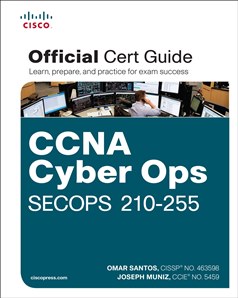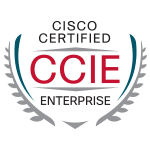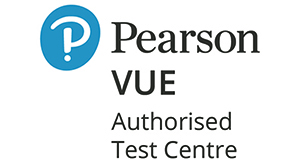Implementing Cisco Cybersecurity Operations (SECOPS) Course
Implementing Cisco Cybersecurity Operations (SECOPS) Certification
SECOPS Implementing Cisco Cybersecurity Operations certification training course covers network security techniques.
The Cyber Security space is an ever-evolving field with new threats encountered daily and with limited professionals.
The SECOPS Implementing Cisco Cybersecurity Operations certification training course prepares candidates to begin a career within a Security Operations Centre (SOC), working with Cybersecurity Analysts at the associate level. The SECOPS 210-255 exam tests a candidate’s knowledge and skills needed to successfully handle the tasks, duties, and responsibilities of an associate-level Security Analyst working in a SOC.
- Training: get practical technical skills
- Receive a certificate of course attendance
- Small class size: increased instructor interaction
- Authorised test centre: exams taken at our premises
- Expert trainers: imparting real world experience
There is no certification exam associated with this training course.
Ciscopress SECOPS course material included
- Endpoint Threat Analysis and Computer Forensics
- Network Intrusion Analysis
- Incident Response
- Data and Event Analysis
- Incident Handling
This course is likely to add to the employment related skills of the participants. The skills developed are likely to be used in the course of being an employee or working in a business.
- Network security engineers
- Network support staff
- Network architects
- Candidates preparing for the CCNA Cyber Ops certification
- Interpret the output report of a malware analysis tool such as AMP
- Threat Grid and Cuckoo Sandbox
- Describe these terms as they are defined in the CVSS 3.0: Attack vector, Attack complexity, Privileges required, User interaction, Scope
- Describe these terms as they are defined in the CVSS 3.0: Confidentiality, Integrity, Availability
- Define these items as they pertain to the Microsoft Windows file system: FAT32, NTFS, Alternative data streams, MACE, EFI, Free space, Timestamps on a file system
- Define these terms as they pertain to the Linux file system: EXT4, Journaling, MBR, Swap file system, MAC
- Compare and contrast three types of evidence: Best evidence, Corroborative evidence, Indirect evidence
- Compare and contrast two types of image: Altered disk image, Unaltered disk image
- Describe the role of attribution in an investigation: Assets, Threat actor
- Interpret basic regular expressions
- Describe the fields in these protocol headers as they relate to intrusion analysis: Ethernet frame, IPv4, IPv6, TCP, UDP, ICMP, HTTP
- Identify the elements from a NetFlow v5 record from a security event
- Identify these key elements in an intrusion from a given PCAP file: Source address, Destination address, Source port, Destination port, Protocols, Payloads
- Extract files from a TCP stream when given a PCAP file and Wireshark
- Interpret common artifact elements from an event to identify an alert: IP address (source / destination), Client and Server Port Identity, Process (file or registry), System (API calls), Hashes, URI / URL
- Map the provided events to these source technologies: NetFlow, IDS / IPS, Firewall, Network application control, Proxy logs, Antivirus
- Compare and contrast impact and no impact for these items: False Positive, False Negative, True Positive, True Negative
- Interpret a provided intrusion event and host profile to calculate the impact flag generated by Firepower Management Centre (FMC)
- Describe the elements that should be included in an incident response plan as stated in NIST.SP800-61 r2
- Map elements to these steps of analysis based on the NIST.SP800-61 r2
- Preparation, Detection and analysis, Containment, eradication, and recovery, Post-incident analysis (lessons learned)
- Map the organisation stakeholders against the NIST IR categories: Preparation, Detection and analysis, Containment, eradication, and recovery, Post-incident analysis (lessons learned)
- Describe the goals of the given CSIRT: Internal CSIRT, National CSIRT, Coordination centers, Analysis centers, Vendor teams, Incident response providers (MSSP)
- Identify these elements used for network profiling: Total throughput, Session duration, Ports used, Critical asset address space
- Identify these elements used for server profiling: Listening ports, Logged in users/service accounts, Running processes, Running tasks, Applications
- Map data types to these compliance frameworks: PCI, HIPPA, SOX
- Identify data elements that must be protected with regards to a specific standard (PCI-DSS)
- Describe the process of data normalization
- Interpret common data values into a universal format
- Describe 5-tuple correlation
- Describe the 5-tuple approach to isolate a compromised host in a grouped set of logs
- Describe the retrospective analysis method to find a malicious file, provided file analysis report
- Identify potentially compromised hosts within the network based on a threat analysis report containing malicious IP address or domains
- Map DNS logs and HTTP logs together to find a threat actor
- Map DNS, HTTP, and threat intelligence data together
- Identify a correlation rule to distinguish the most significant alert from a given set of events from multiple data sources using the firepower management console
- Compare and contrast deterministic and probabilistic analysis
- Classify intrusion events into these categories as defined by the Cyber Kill Chain Model: Reconnaissance, Weaponization, Delivery, Exploitation, Installation, Command and control, Action on objectives
- Apply the NIST.SP800-61 r2 incident handling process to an event
- Define these activities as they relate to incident handling: Identification, Scoping, Containment, Remediation, Lesson-based hardening, Reporting
- Describe these concepts as they are documented in NIST SP800-86: Evidence collection order, Data integrity, Data preservation, Volatile data collection
- Apply the VERIS schema categories to a given incident
“We have helped thousands achieve Cisco Certifications, let us help you”
– Murad Tanvir, Double CCIE #17081

Get a certificate of attendance to prove your commitment to learning

Smaller class size provides a personalised learning experience for every student

Course material in digital format is included for flexibility and ease of use

Practical scenarios are discussed for better understanding of the key concepts

Our trainers are highly skilled with expertise and extensive real-world experience

Relax, we will beat competitor’s advertised price in Australia. Our course has no extra costs
| Location | Type | Duration | Price | Dates | |
|---|---|---|---|---|---|
| Location | Type | Duration | Price | Dates |
The supply of this course/package/program is governed by our terms and conditions. Please read them carefully before enrolling, as enrolment is conditional on acceptance of these terms and conditions. Proposed dates are given, courses run subject to availability and minimum registrations.
Find out why we are the leading choice to help boost your career in Australia
| Approachable and knowledgeable; comfortable surroundings. Logitrain does make IT training easier |
I recently followed the ITIL Foundation course at Logitrain. The training, materials and facilities were excellent and I would not hesitate to train with Logitrain again.
Thanks for a great week! Really enjoyed and feel I picked up a lot. Great Trainer! Will definitely look at further studies here.
Well-presented and able to convey immense knowledge to class. All queries were responded to promptly.
Excellent teaching method, easy to understand.
Logitrain provided a valuable insight into ITIL and enabled me to excel and advance my knowledge through a simple and well organised series of sessions.
Great place to study for certification, knowledgeable persons, excellent customer service. Ready to answer queries on the spot, very helpful.
The trainer was very patient and gave everybody the opportunity to participate.
The trainer explained everything very well. Logitrain was very helpful for me in getting a better overall understanding of CCNA. I previously had studied it 2 years earlier but required revision
Over 1000 organisations have relied on Logitrain to be their trusted training partner.

Don’t Wait. Please fill the form now.








































































